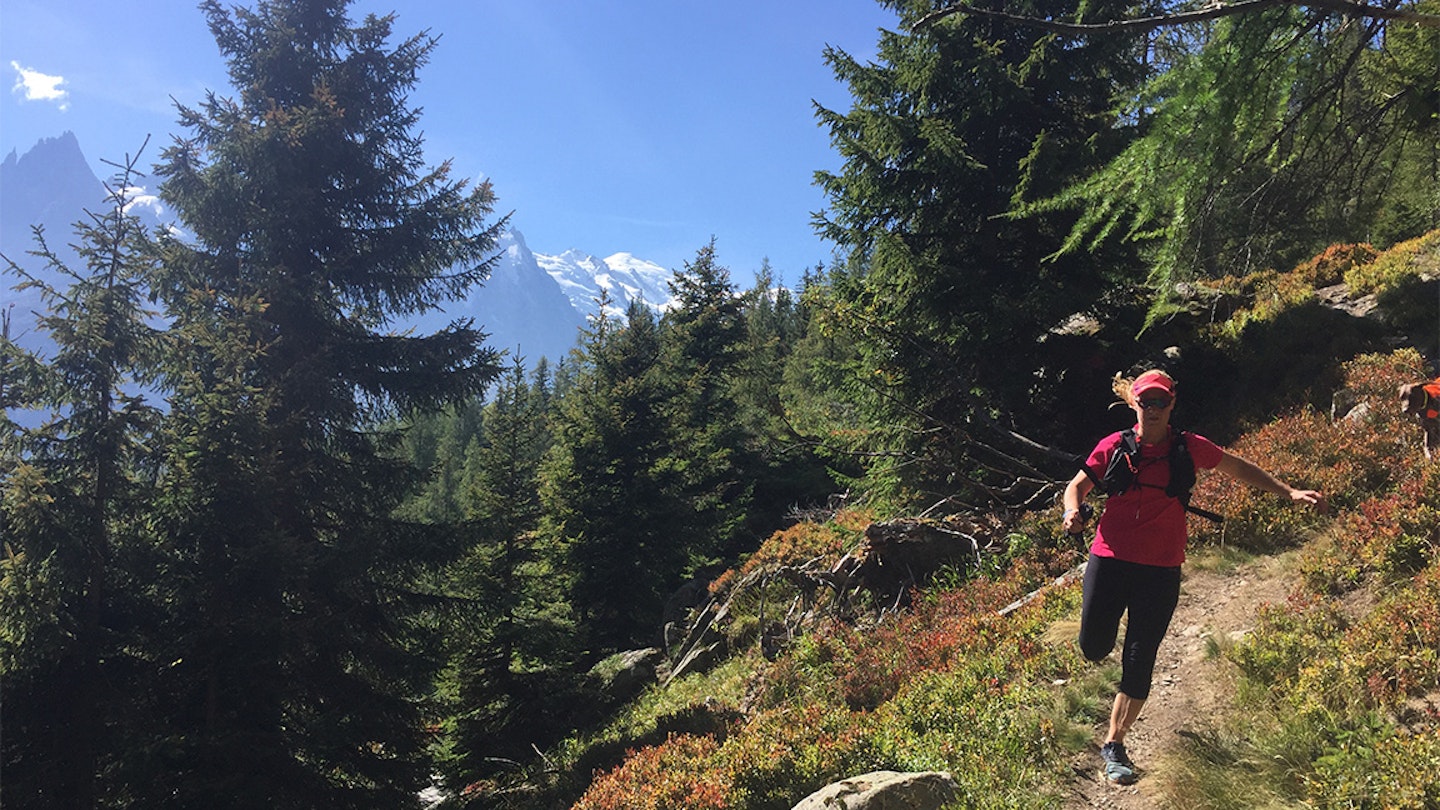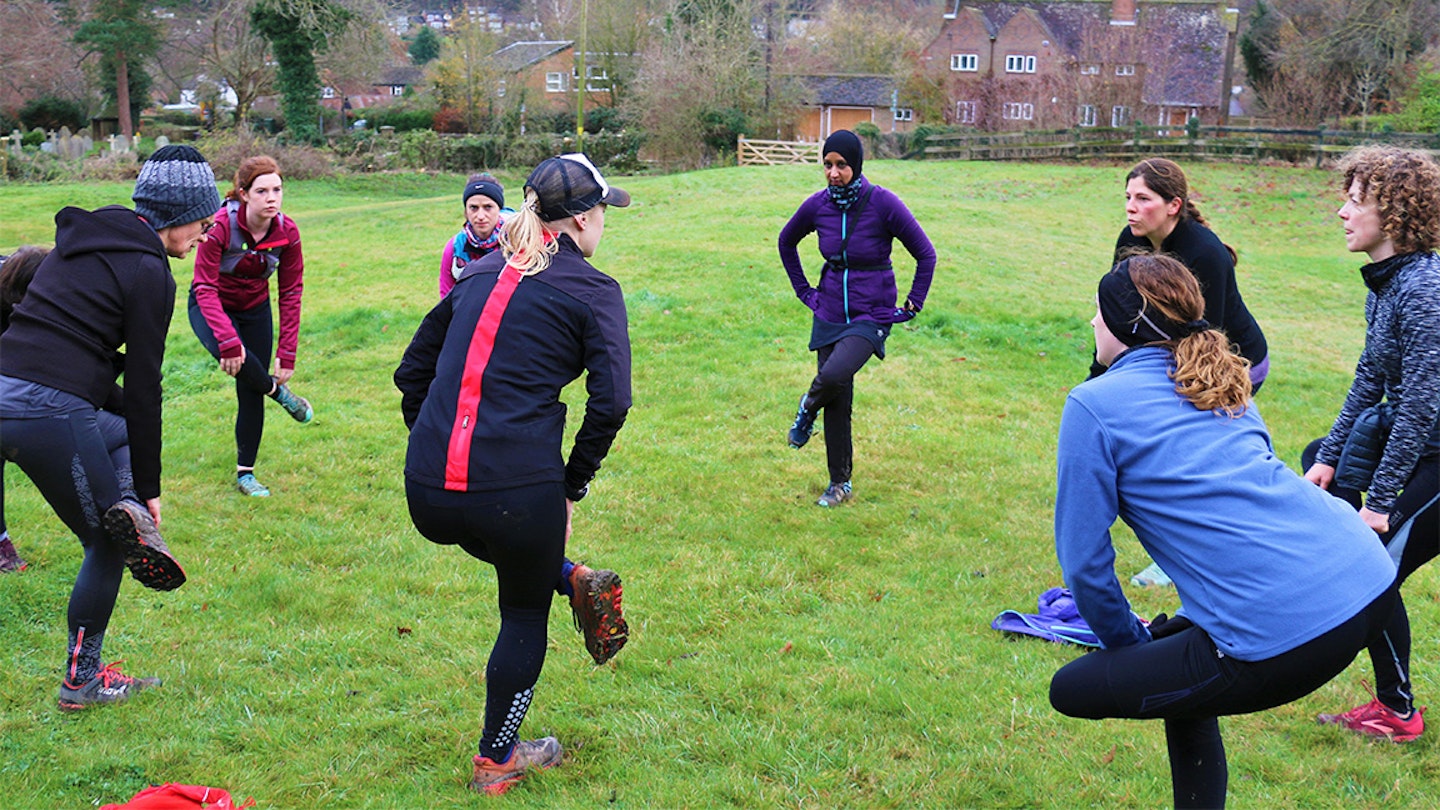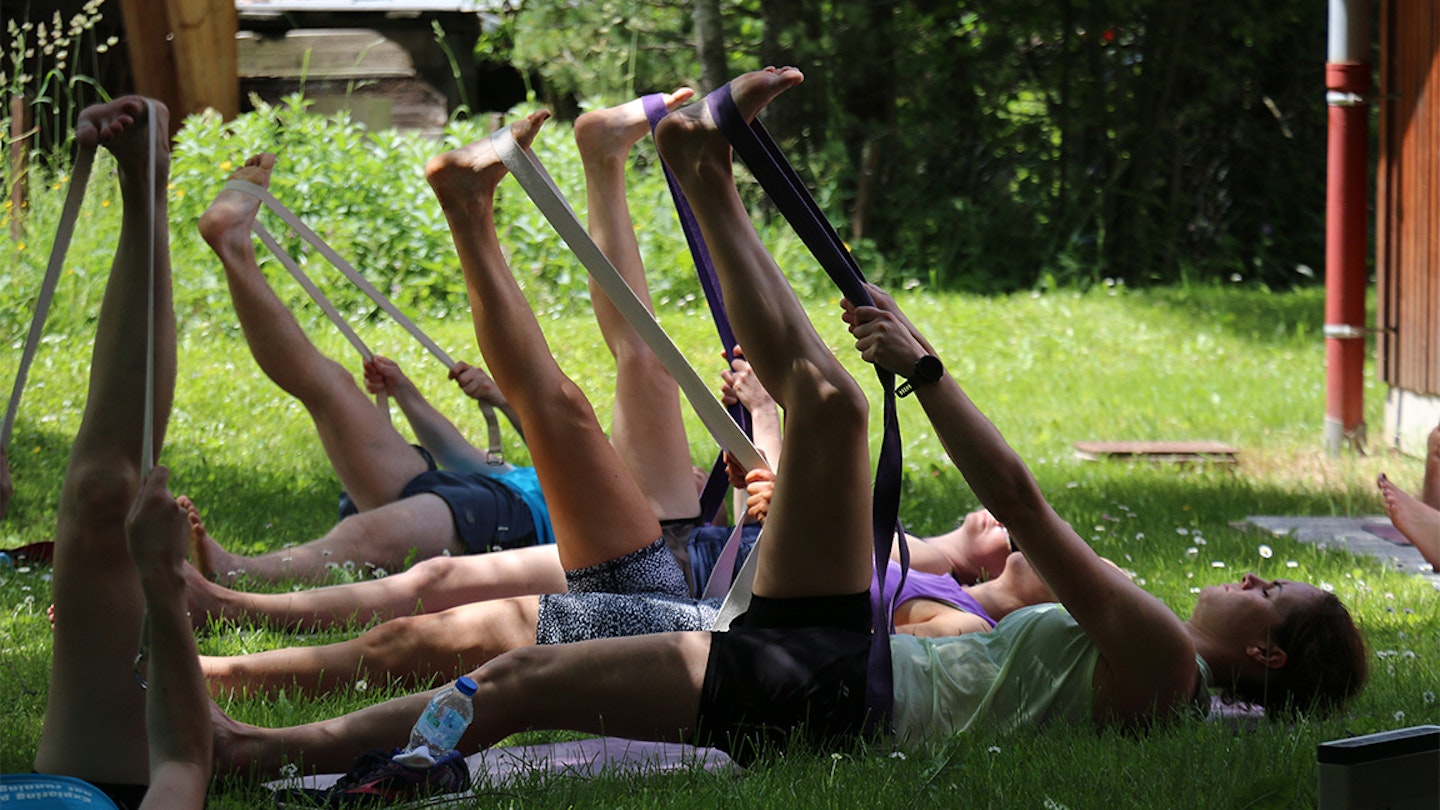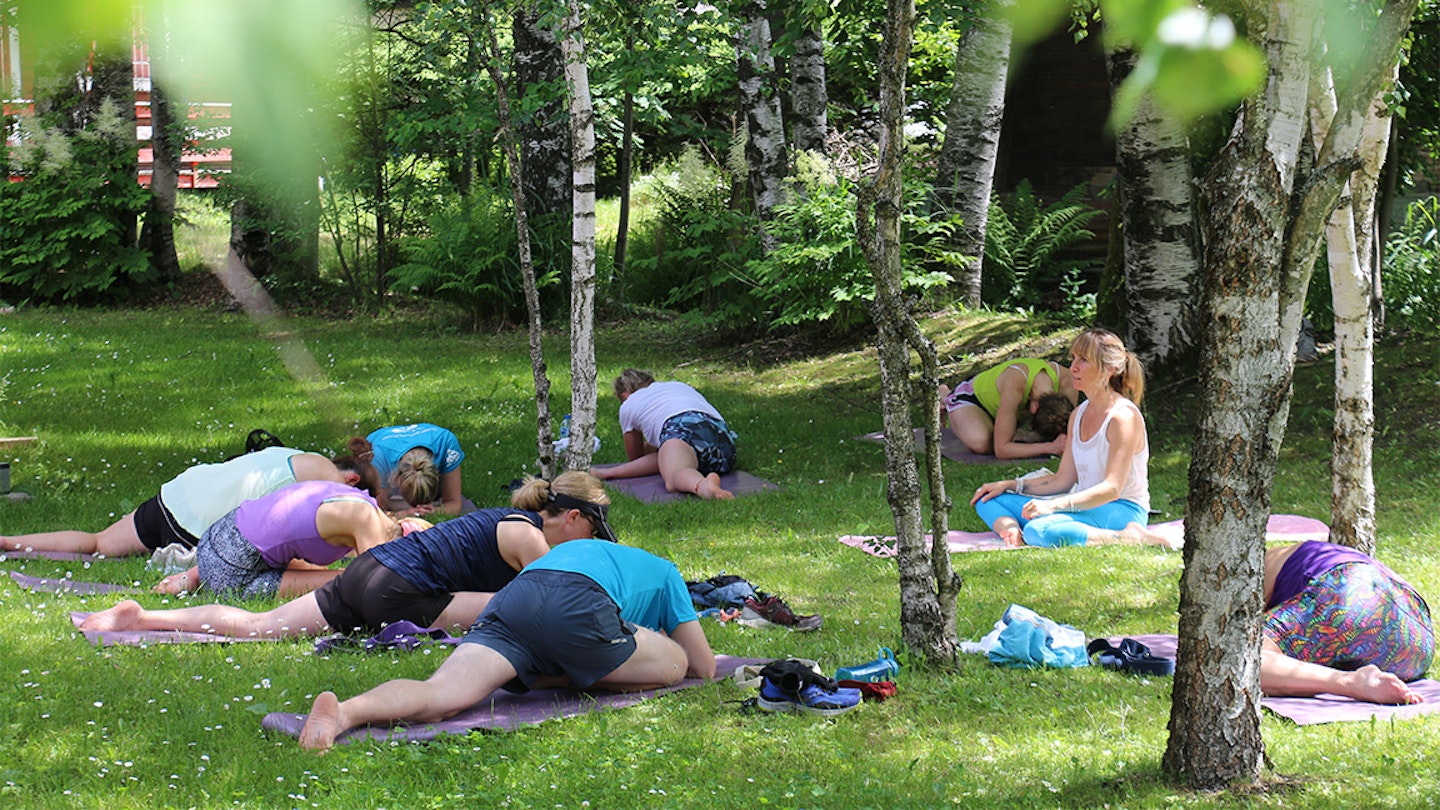It's a commonly known truth that being injured as a runner sucks. Runners are famously awful at being injured and resting. In this article, coach, ultra runner and Run the Wild founder Simon James shares how to prevent some of the most common running injuries to help you become a more injury-free, happier runner.
Less injuries mean being able to do more of what you love, giving you every opportunity to train harder and become a stronger runner. Once you've recognised which common running injury you're suffering with, the next step is to consistently put the effort in to rehab and recover to get you back on the trails as soon as safely possible.
How to prevent common running injuries

First off, you need to take a long hard look at what you are doing with your running. Are you factoring in enough strength and conditioning, rest and recovery, stretching, warm-ups? Is your training progressive without sudden changes in loading? Are you using the right gear? Are you eating and hydrating properly? I suspect not.
Are you getting injured a lot? Are you doing too much? Take an honest inventory of your goals and consider whether they marry well with your time available. If all of this seems a bit much, then a running coach might be what you need. This is where Run the Wild can help with aligning goals with training.
Most of us have really busy lives and if you did everything perfectly, it would take a lot of time. Plus, remember that most injuries are caused by our significant inactivity all day, followed by that sudden desire to be active at the end of the day! No wonder we get injured.
Let’s take a look at some big, easy wins to make sure you are more injury resistant. The really good news is these methods pretty much tackle all of the most common running injuries you'll come across.
Getting the right advice
Since all injuries are personal and are difficult to diagnose, you should always seek the help of a medical practitioner. However, first, let’s take a look at some of the most common injuries that occur.
The right kit
Do you have the right shoes for the terrain you're running on? I'm going to hazard a guess those reading err towards off-road exploring, so having the right pair of trail running shoes for your feet is a must.
They need to be comfortable, the correct size and not fatigued in areas which could create unnatural gait. The right shoes will build confidence, keep you upright (on those muddy routes) and reduce the likelihood of strains and sprains. Take a look at our advice on finding the best fit in a trail running shoe if you're unsure.
Warm-up and cool-down

A warm-up is a progressive activation of body (and mind) which is appropriate for the run. If you are going for sprints, then you need a long warm-up and it needs to have speed incorporated at the end. If you are warming up for an ultra, that might just be a slow jog from the start line!
Movements need to be dynamic and flowing, and build up in intensity. This will reduce the chance of sudden changes in loading on muscles and tendons which are not warmed up.
Even more important is the cooldown. Stretching at the end of a run, restores muscle natural length, helps toxins flow away from muscles and helps with blood flow. Just a couple of minutes of stretching will cover off most major muscle groups as each stretch should last for no more than 15 seconds post-exercise.
Strength and conditioning

Strength and conditioning for running is super critical, however, most runners do very little or none at all. Most injuries are avoided with regular leg strength and core workouts. They are a great way of mixing up your running routine and making you the robust runner that you deserve to be.
Don’t forget to strengthen ankles too. All of the workouts below help reduce reaction times, improve balance and coordination. With regular strength and conditioning, ideally several times a week you are on your way to becoming just a bit more unbreakable!
Eat, drink and sleep well
You need to fuel your body both during runs, and also in life generally. You are what you eat; a balanced and healthy diet that supports your exercise is really important. All the good stuff happens when you sleep and if you are not getting enough rest in between runs combined with not enough fuel, they are all for nothing.
Runners often try to diet while increasing training load, which can lead to calorie deficiencies. The other frequent neglect is not getting enough protein in their diets and not eating enough during training runs.
Eating within 30 minutes post exercise reduces the chance of muscle soreness. Pay particular attention to hydration and salt intake. You also need to understand that post-exercise your body continues needing be looked after.
Sleeping, eating and drinking well are important for both body and mind and as trail runners, you need to stay sharp for the trails!
Build-up slowly
You may have heard of the 10% rule, which is to make sure you don't increase training volume more 10% per week in order to avoid injury. It’s a bit more complex than that, as some individuals can cope with greater variation, but it remains a good principle. Think carefully about how much you are changing your overall intensity, or distance, or both over the course of a week, then take care not to make dramatic changes week to week.
Build-down slowly
Suddenly stopping running may feel like a great idea particularly after having completed a major event, but no one told your body that! You’ve created this running machine and it needs to be wound back down slowly in order to not aggravate those precious tendons (they really don’t like change!).
Regular massage and stretch

Your body needs regular maintenance. Regular deep tissue massage will not only speed up recovery but also make you more aware of your body and its deficiencies. Think of your body as a series of pulleys and if one doesn’t release the tension then it will be on its joint, similarly if it’s not strong enough it won’t lift the load required.
A good massage therapist will be able to guide you on which muscles to stretch more regularly and which ones need more strength work.
Run trails
Of course, I'm preaching to the choir with this one! Trails are such a great way to avoid overuse of muscles. It’s an all body workout and since every step is different you’ll possibly avoid some of those repetitive strain injuries which can get picked up on the road. Plus, it’s not only great for the body, but also for the mind.
Stay Motivated
Finally, if you do get injured. Don’t panic! All runners get injured it’s what you do next that counts. Make sure you get enough rest, seek professional advice, follow the advice, stay positive and come back stronger by focussing on prevention
What is Run the Wild?
Simon James founded Run the Wild in 2013, which has now been delivering incredible trail running adventures for over a decade. Our running events include everything from 10km runs in the Chilterns to multi-day running holidays in the Alps. From guided runs to navigation workshops and running coaching – there is something for you wherever you are on your trail running journey!
